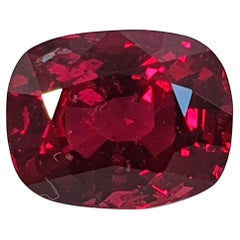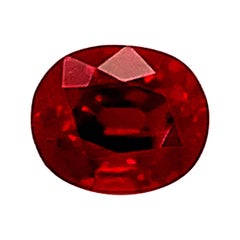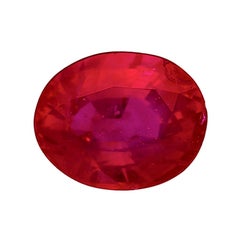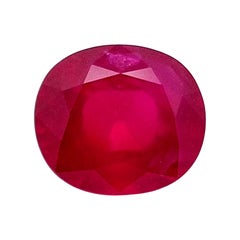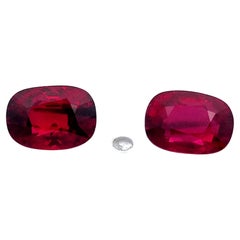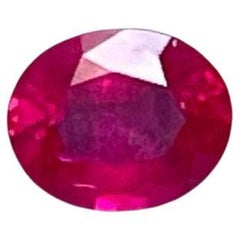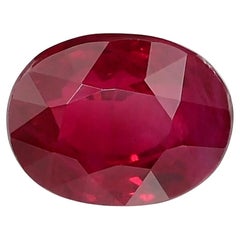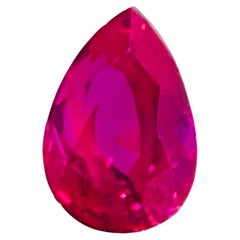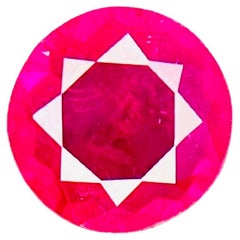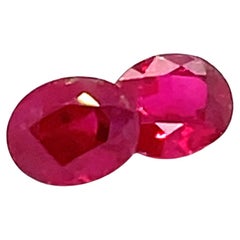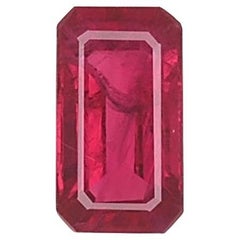Burma Pigeon Blood Ruby Loose
2010s Burmese Loose Gemstones
Ruby
21st Century and Contemporary Burmese Artisan Loose Gemstones
Ruby
21st Century and Contemporary Burmese Artisan Loose Gemstones
Ruby
21st Century and Contemporary Burmese Modern Loose Gemstones
Ruby
2010s Burmese Loose Gemstones
Ruby
2010s Burmese Loose Gemstones
Ruby
2010s Loose Gemstones
Ruby
2010s Loose Gemstones
Ruby
21st Century and Contemporary Burmese Loose Gemstones
Ruby
2010s Burmese Loose Gemstones
Ruby
2010s Loose Gemstones
Ruby
2010s Hong Kong Contemporary Loose Gemstones
Ruby
2010s Loose Gemstones
Ruby
2010s Loose Gemstones
Ruby
2010s Burmese Loose Gemstones
Ruby
21st Century and Contemporary Burmese Arts and Crafts Loose Gemstones
Spinel
21st Century and Contemporary Burmese Arts and Crafts Loose Gemstones
Spinel
2010s Loose Gemstones
Ruby
2010s Loose Gemstones
Ruby
2010s Loose Gemstones
Ruby, Silver
2010s Loose Gemstones
Ruby
2010s Loose Gemstones
Ruby
2010s Loose Gemstones
Ruby
2010s Loose Gemstones
Ruby
2010s Thai Contemporary Solitaire Rings
Ruby
Recent Sales
21st Century and Contemporary Burmese Loose Gemstones
Ruby
2010s Loose Gemstones
Ruby
2010s Burmese Loose Gemstones
Ruby
2010s Burmese Loose Gemstones
Ruby
21st Century and Contemporary Burmese Contemporary Loose Gemstones
Ruby
2010s Burmese Loose Gemstones
Ruby
2010s Loose Gemstones
Ruby
2010s Loose Gemstones
Ruby
2010s Loose Gemstones
Ruby
2010s Loose Gemstones
Ruby
2010s Loose Gemstones
Ruby
2010s Burmese Loose Gemstones
Ruby
2010s Loose Gemstones
Ruby
2010s Loose Gemstones
Ruby
2010s Loose Gemstones
Ruby
2010s Artist Loose Gemstones
Ruby, 18k Gold
2010s Hong Kong Modern Loose Gemstones
Ruby
2010s Hong Kong Contemporary Loose Gemstones
Ruby
2010s Hong Kong Contemporary Loose Gemstones
Ruby
2010s Hong Kong Contemporary Loose Gemstones
Ruby
2010s Hong Kong Contemporary Loose Gemstones
Ruby
2010s Hong Kong Contemporary Loose Gemstones
Ruby
People Also Browsed
2010s Japanese Contemporary Bridal Rings
Ruby, White Diamond, Diamond, Platinum
2010s Modern Loose Gemstones
Diamond, White Diamond
1990s American Drop Necklaces
Diamond, Sapphire, Platinum
21st Century and Contemporary American Link Necklaces
Diamond, White Diamond, 14k Gold, Yellow Gold
2010s Unknown Modern Loose Gemstones
Diamond
21st Century and Contemporary Hong Kong Contemporary Engagement Rings
Sapphire, Diamond, White Gold, 18k Gold
21st Century and Contemporary Three-Stone Rings
Pink Diamond
Early 2000s Unknown Art Deco Engagement Rings
Diamond, Sapphire, Platinum
21st Century and Contemporary American Modern Stud Earrings
Diamond, Ruby, Gold, 18k Gold, Yellow Gold
2010s Hong Kong Modern Engagement Rings
Diamond, Ruby, 18k Gold, White Gold
21st Century and Contemporary Burmese Modern Loose Gemstones
Ruby
21st Century and Contemporary Singaporean Art Deco Solitaire Rings
Ruby, Yellow Gold
21st Century and Contemporary Loose Gemstones
Zircon, Blue Zircon
21st Century and Contemporary American Contemporary Drop Necklaces
Diamond, Emerald, 18k Gold, White Gold
2010s Sri Lankan Loose Gemstones
Blue Sapphire
2010s Hong Kong Contemporary Engagement Rings
Ruby, Diamond, 18k Gold
Burma Pigeon Blood Ruby Loose For Sale on 1stDibs
How Much is a Burma Pigeon Blood Ruby Loose?
The Legacy of Ruby in Jewelry Design
This deep red gem is the color of heat and passion — vintage and antique ruby jewelry is perfect for those born in the middle of summer.
Rubies are one of the few gemstones that can give diamonds a run for their money. Just consider the Van Cleef & Arpels “scarf” necklace the Duke of Windsor presented to the Duchess on her 40th birthday, in 1936 — set with diamonds and dripping with rubies, a testament to the deep-red gemstone’s power — or the slippers encrusted with 4,600 rubies that Harry Winston made to commemorate The Wizard of Oz’s golden anniversary. July babies have permission to adorn themselves with this beautiful red stone even when it’s not their birthday.
Rubies are considered precious stones — along with diamonds, sapphires and emeralds — and have a hardness of 9.0 on the Mohs Scale, surpassed only by Moissanite and diamonds. They are composed of corundum, a colorless mineral that is also the basic material of sapphires. In the July birthstone, the red of the gemstone — and the various hues seen in sapphires — are produced by the presence of trace elements. In the case of a ruby, this element is chromium. Rubies range in color from vermilion to a violet red. They are also pleochroic, which means that a stone’s hue can vary depending on the direction of viewing. The most sought-after color is pigeon’s blood: pure red with a hint of blue.
Rubies that are hosted in dolomite marble are the most prized: Because the marble is low in iron, so are the rubies, resulting in a more intense color. Rubies found in basalt, which has a higher iron content, are generally darker and less intense.
When shopping for antique and vintage ruby jewelry, remember that the 4Cs of selecting the perfect diamond — color, clarity, cut and carat — also apply to rubies.
According to the Gemological Institute of America, the color of the July birthstone should be a vibrant to slightly purplish red, and the stone should be clear and inclusion-free. Accordingly, the cut should show off its color and clarity. As for the last criterion, fine rubies more than a carat in weight are rare. Often, large rubies are more expensive than diamonds of comparable weights.
Find a collection of ruby necklaces, ruby rings and other accessories on 1stDibs.
Finding the Right Loose-gemstones for You
Are you shopping for diamonds and other loose gemstones to create your own custom jewelry?
Why might you purchase a diamond or gemstone “loose” — that is, on its own, not mounted in a piece of jewelry? Perhaps you’re a connoisseur looking to acquire a unique investment. The scarcity of high-quality colored diamonds, for instance, especially pink diamonds, means that their value increases over time; the same is true of rare Kashmir sapphires and Burmese rubies. Far rarer than diamonds, Paraiba tourmaline, discovered only in the 1980s, is treasured as much for its extraordinary color as its scarcity, both of which contribute to its high value.
A more common scenario would be that you’re hoping to create a very special piece of custom jewelry, such as an engagement ring or a milestone-birthday present, and want to personally select the most beautiful, unusual, or ultra-rare stone you can find and afford. Doing so adds to the romance and substance of the gift and can be a part of the story told as the jewel is passed from generation to generation.
If this sounds like you, read on for tips on becoming one of the world’s savviest gem hunters.
Educate yourself: When buying any piece of gem-set fine jewelry, you should familiarize yourself with the factors that determine a stone’s price. This will enable you to streamline your search for the perfect gem and have intelligent, productive conversations with sellers.
There is a wealth of information online, such as our diamond-buying guide and this overview of colored gemstones for engagement rings. The buying guides of the Gemological Institute of America (GIA), searchable by stone type, are also a widely trusted source for consumers venturing into the world of diamonds and gems for the first time.
Vet your vendor: If you peruse 1stDibs with any regularity, you know there is no shortage of vendors who deal in top-quality loose gemstones. (Read about our vetted sellers.) Finding a trustworthy, established dealer may be as easy as getting a recommendation from friends or family. And, although it may sound obvious, it pays to Google your candidates — and consult customer reviews — before making contact.
Harakh Mehta, designer and founder of the Mumbai, India–based fine-jewelry brand Harakh, has an innate understanding of proper client relations, especially when the customer is in unfamiliar territory. “Start chatting with the dealer, get to know them better," he says. "It’s very important to establish a comfort level. We never push a sale, as we want it to be a carefully considered purchase. So, if the client is not in a rush, we do it over a few virtual meetings or phone calls.”
Request documentation: The best dealers go to great lengths to furnish clients with documents verifying the quality rating, natural origin and provenance of a stone — showing, for example, that loose emerald hails from the famous Muzo mine in Colombia — and disclosing any treatments applied to enhance its appearance. (And who doesn't love emerald jewelry? The most valuable emeralds are the ones that have a deep bluish-green to true green color and no visible inclusions.)
If no grading report is available for a stone you are interested in, the dealer should be able to provide an authenticity document, such as an appraisal or info sheet, that has been signed by an in-house gemologist or professional appraiser. Google those names, too, for extra peace of mind.
Ask for videos and visuals: When transacting with a gem dealer online, you should always request real-time videos and photographs, since professional photos of a stone, usually on a white background, have likely been retouched for optimal presentation.
Read more about how to buy loose gemstones and find your dream gems today on 1stDibs.
